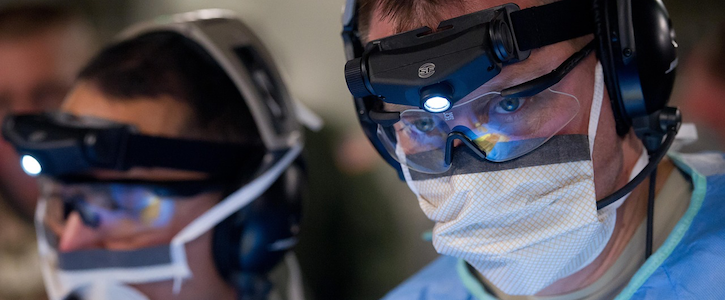How to Make Self-Scheduling Work for Specialty Care
Self-scheduling can empower patients and improve care.

Self-scheduling is on the rise. Patients have been demanding self-service options for years, and providers are finally starting to respond by adopting the technology. But the functionality of some self-scheduling solutions remains quite limited. While it has proven to be an effective tool for patients seeking general and primary care services, many specialty groups have been hesitant to adopt self-scheduling due to these limitations. It’s understandable — the care needs of those requiring a specialist are sometimes so specific that many of the solutions available cannot factor in every detail required to connect a patient with the right specialist. But it’s not impossible, and with the right tools, it can be simple.
>> LISTEN: What We Learned at HIMSS19
Decision Support Guides the Way
To meet the needs of specialty groups, self-scheduling technology must automate business rules in a way that enables providers to maintain control over their calendars while offering decision support that guides patients to the right specialist and the right appointment. This is particularly vital when seeking an appointment for something like cancer care or with an orthopedist or neurologist. It considers whether a patient is new or current, if their insurance or diagnosis requires more or less triage, among other factors.
Decision support begins with a series of customized questions in which the patient’s answers guide them to the best fit specialist based on a specific care need or concern. With each answer provided, the search criteria narrow, leading to the most successful patient-specialist-appointment match. For example, decision support will guide a patient with knee pain to an orthopedist specializing in knee-related injuries rather than one who specializes in wrist or elbow injuries. Furthermore, provider preferences on which slots are available, when and for what type of visit are programmed in, ensuring that the patient is matched to the right appointment.
The automated process also optimizes the patient self-scheduling experience. By analyzing where patients drop off, providers can adjust the question and answer portion to fine-tune the scheduling experience and increase scheduling rates from start to finish.
Specialty Scheduling in Action
Multi-specialty groups already leveraging online self-scheduling for their primary care physicians can easily roll out the solution to their specialists. It’s a common progression throughout these organizations, seeing first the success with general appointments and then extending that outward.
For example, The Iowa Clinic, the largest physician-owned multi-specialty group in Central Iowa, has incorporated online self-scheduling to connect patients with the group’s primary and specialty care physicians. Patients are now able to schedule an appointment for various specialists online via the organization’s website any time of day or night. The convenience and privacy of booking at home and on their own time provides the flexibility patients frequently seek.
Another example is CareMount Medical, the largest independent multi-specialty medical group in New York state. The organization has incorporated patient self-scheduling across all of their digital access channels, and patients can now self-schedule across all primary care physicians and several specialties, including dermatology, OBGYN and pediatrics. With decision support, CareMount can better manage its patients and have a real understanding of appointment type, qualifying what the patient truly needs — an absolute necessity for specialty care.
Self-scheduling has also proven to be an effective and important factor in searching for and scheduling cancer care and treatment. Coping with a cancer diagnosis is already a stressful and confusing time, and it is often only made worse by the frustrating process of searching for a care provider and scheduling treatment. Online self-scheduling can mitigate this added frustration by helping patients comfortably locate and connect with the exact care they need.
Consider Memorial Sloan Kettering Cancer Center, the world’s oldest and largest private cancer center. It recently launched online patient self-scheduling to better connect patients to specialists across service areas such as lymphoma, myeloma, breast surgery and medical oncology, and thoracic surgery and medical oncology. In addition to improving access to cancer care and treatment, the self-scheduling process also allows patients to be more prepared for their initial appointments, given their involvement in the question-and-answer phase of the scheduling process.
Providing high-quality and efficient healthcare is a complex task that requires integrated, real-time solutions that improve the experience both for physicians and patients. Just like primary care groups, specialists can — and are — reaping the benefits of self-scheduling to increase new patient acquisition and retention, guide patients to appropriate provider, improve patient satisfaction and engagement and enhance their brand. In the move to a consumer-centric healthcare system, there is no reason why more specialty care groups shouldn’t leverage these solutions and see the same return as their peers.
Sanju Pratap is the vice president of payors and products at MyHealthDirect where she oversees product strategy.
Get the best insights in healthcare analytics directly to your inbox.
Dig Deeper
Setting Expectations Around AI in Healthcare
Healthcare Needs Tech That Empowers Physician Leaders
Survival of the ‘Fitness’ and Electronic Health Records